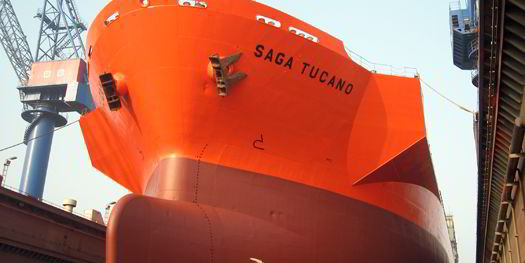Saga Shipholding said it has completed installing ballast water gear for its entire fleet of 32 open-hatch bulkers.
The Norwegian owner is using gear from Stavanger-based Optimarin, whose ballast water treatment system won the coveted US Coast Guard type approval last December. Optimarin's system primarily uses ultraviolet light to kill invasive species.
The 56,000-dwt Saga Future (built 2012) was the first to get the Optimarin system in 2012. The final installation was completed on the 47,000-dwt Saga Viking (built 2002) during a scheduled docking in China.
Saga's fleet operates primarily in transporting pulp from South America to markets in Europe and the Far East.
Nils Otto Bjorhovde, Saga Shipholding’s Hong Kong-based technical manager, said the company has "enjoyed close to five years of reliable, simple and efficient ballast water treatment operation.”
Optimarin chief executive Tore Andersen says the five-year time frame for Saga reflects the drydock cycle for the company's ship. He says owners need to plan at least a year in advance by ordering a systems and doing any pre-fabrication work in order to make a ballast water treatment install as simple as possible.
He estimates that Saga spent about $1m per ship for each system installed. Ongoing operating expenses for the systems are primarily on-board power consumption and spare parts.
Owners remain reluctant to invest, given industry-wide cost cutting. But the fact that there are now three US Coast Guard type-approved ballast treatment systems iwill require owners to seriously look at what's available in the market.
"The US Coast Guard will make it more difficult for owners to get extensions for compliance," Andersen said. "It's not a direct cost savings investment, but it is good for the environment and it is required."
Andersen says the US Coast Guard's moves to be more stingy with extension has spurred more owners to ask about installing ballast treatment systems. Optimarin has now received orders for around 500 systems.
"We are seeing lots more orders coming in summer and fall," Andersen said.



